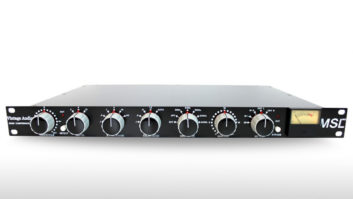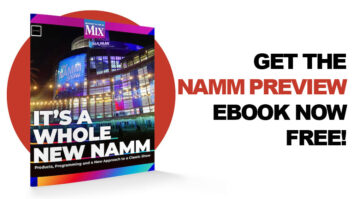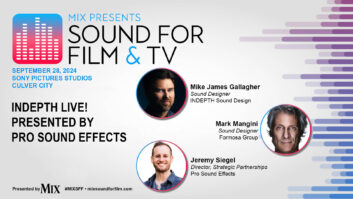Yep, if you’ve been hearing sleigh bells in your head when trying to fall asleep at night it’s because it’s that time of the year again: time to decide what to buy your favorite producer, engineer or musician this holiday season.
Stealth Sonics C9 In-Ear Monitors
Singapore-based Stealth Sonics is one of the more recent IEM companies to raise to global attention and after living with the company’s C9 IEMs, it’s easy to see why. My experience with IEMs is that even if they are comfortable, they become irritating after 4-5 hours of listening. Not true with the C9s. I’ve worn them for the duration of multiple 10+ hour international flights without experiencing even the slightest bit of discomfort. They are so comfortable that I wear them on the plane even if I’m not listening to music solely for the isolation (approximately 32 dB!).
Stealth Sonics are made up of audiologists, engineers and musicians devoted to providing engineers, producers, musicians, artists and audiophiles an exceptional listening experience. I had the opportunity to visit the company’s headquarters in Singapore last summer and the devotion to detail, sound quality and hearing protection made me an instant fan. Instead of relying on older IEM technology, Stealth Sonics is devoted to using its combined expertise to create an innovative, hand-crafted in-ear monitor system that provides sonically stunning performance regardless of preferred listening volume or musical style due to Stealth Sonic’s ability to tune the system to natural acoustics of the listener’s ear.
The C9 is the flagship Stealth Sonics model. The nine-driver configuration includes one dynamic (low frequency), two balanced armature (mid frequency), two balanced armature (high frequency), and four balanced armature (super high frequency). The drivers are housed in a proprietary, acoustically optimized composite material that delivers a frequency range of 18 Hz to 40 kHz (not that anyone is actually hearing anything that high but it’s nice to know it’s there!). A small port at the top of each earpiece facilitates air movement from within the enclosure, allowing the dynamic driver to efficiently move air at the output, resulting in an enhanced bottom end. The IEMs include a hard vinyl zippered case large enough to comfortably store the IEMs and accessories which include a cleaning cloth and brush, a ¼-inch adapter, an airplane adapter, a 1.2-meter standard cable and a 1.2-meter iPhone cable (MFI). Stealth Sonics provides a one-year warranty as well as a 30-day refit policy should you not like how your IEMs feel when placed in your ear.
Upon first use, the Stealth Sonics are slightly more difficult to insert and remove than other IEMs, but this is only noticeable the first few times of inserting and removing them. Once you’ve used them a few times, they are as easy to insert and remove as any other IEM that I’ve ever encountered.
I’ve literally spent 100s of hours over the last several months listening to the Stealth Sonics C9 IEMs. I’ve used them while exercising, while on the plane, in the studio, in the car and practically anywhere else you can think of and they are stunningly good. Their detail is exceptional at both low and high volumes and they do an amazing job of providing a smooth, balanced sound with a full, defined bottom end.
Stealth Sonics provide all of the design customization options as the competition, but with a price tag of $1,499, the C9s are significantly less than many of competitors’ products—without a compromise in their sound quality, durability or accessory options.
Gamechanger Audio Plasma Rack
Gamechanger Audio released the Plasma Pedal nearly two years ago and I found it extremely intriguing. Most guitar players I record have their own pedal collections so I couldn’t justify the price tag for something I’d likely rarely use, but the release of the Gamechanger Audio PLASMA Rack was right up my alley. The PLASMA Rack is a 1U rackmount unit perfectly suited for studio mixing. The innovative box creates distortion by converting an audio signal into a series of high-voltage plasma discharges of up to 5,500 volts within a sealed xenon filled tube. The result is a unique distortion that is both edgy and crisp as well as clear and responsive.
The box includes gate controls that allow the user to take control of the PLASMA’s natural gating and a musical 3-band EQ that provides easy tonal shaping and can be switched to affect only the wet sound or dry sound. Additional controls for Input Gain, Sustain, Oversaturate and Tremolo are also included. Full MIDI implementation provides control of all parameters and values via CC Messages and Program Change Messages with eight Preset slots. Expression input allows an expression pedal to be assigned to any parameter of the device. The box incorporates three Effects loops that work with line, and instrument levels make it easy to insert guitar pedals or other processors into the signal chain.
While its $1,499 price tag may place this box beyond the reach of many, I can vouch that it’s well worth the price tag as it is the most unique distortion I’ve heard in 25 years. It is a blast to play with and sounds amazingly good; regardless of the sound source, it is musical and quite usable. So many of the distortion plug-ins today sound good on their own but are difficult to place in a mix—the Plasma Rack is not that way at all.
Wavesfactory Cassette Plug-In
Wavesfactory’s new Cassette plug-in is the perfect solution to any music makers’ lo-fi needs. The plug-in gives the user the ability to run individual tracks (amazing on acoustic guitars!), groups or the entire mix through a virtual cassette deck. It’s not just a simple cassette deck either. The Wavesfactory engineers have scrupulously developed this plug-in to ensure every possible cassette variation can be addressed. There are three machine options—Pro (modeled on the Tascam 414), Micro (modeled on the Omega Reporter-20) and Home (a blend between the other two)—as well as four tape type options: Type 1 (ferric-oxide), Type 2 (chromium dioxide), Type 3 (ferro-chrome) and Type 4 (metal). There are tons of parameters that can be tweaked until the optimum setting is attained, and of course, there are presets to save your favorite setting for use at a later date. Cassette is Mac and Windows compatible, supports AU, VST, VST3 and AAX formats, and runs €59.00 ($65.00 US).
Royer Labs Axemount Dual Microphone Clip
Blending a Royer R-121 ribbon microphone with a Shure SM-57 dynamic mic is the celebrated technique for capturing the magic electric guitar tone. My question is, how in the world have we all been utilizing this technique for over two decades without ever thinking of the Axemount? In the words of Scott Heyniger, Bob Dylan’s legendary monitor engineer, “This is an outrage!”
The rugged, well-made Axemount allows a Shure SM-57 and a Royer R-121 (or a variation of the R-122) to be mounted on a single mic stand, making placement easy and providing the ability to move the mics from one cabinet to another or to a different location on the same speaker without changing the relative position between the two mics—therefore maintaining their phase-alignment. The $39.99 mic clip is constructed from a slightly flexible, highly durable rubber rather than the easily breakable plastic found in many mic clips. It is backed by a 2-year warranty.
I’ve had the opportunity to put the clip to work several times over the past few weeks and I love it. It works exactly as I would expect, but sadly, I’m sick over all the time I realize I’ve wasted moving two mic stands around for the past 20 years. Along with the Slingshot, Royer now has boasting rights for releasing to date the best mic clip and shockmount of the 21st century.
The Beatles Abbey Road Anniversary Edition CD
In the vein of the previous Beatles anniversary releases for Sgt. Pepper’s Lonely Hearts Club Band (2017) and the White Album (2018), The Beatles’ new anniversary edition of Abbey Road is a fundamental account of the final masterpiece by the most influential band in history. Available in several variations (1 CD, 2 CD, 3 CD + Blu-ray, and Vinyl), they range in price from $8 to $88. This rerelease is the perfect opportunity to rediscover one of the greatest albums (and arguably the best-sounding Beatles album) of all-time. When I first heard Sgt. Pepper was being remixed, I initially thought it was sacrilegious, but upon hearing an interview with project producer (and son of Beatles’ producer George Martin) Giles Martin, my tune changed as I realized that the stereo mixes Giles created on the Pepper album were far more true to the original quintessential mono mixes than the original stereo mixes that were created in haste at the time of the album’s first release.
Ultimate Ears Bluetooth Cable
Ultimate Ears in-ear monitor owners can now enjoy wireless listening as the new UE Bluetooth Cable provides the ability to stream to UE IEMs via Bluetooth version 4.1, multipoint. Operational controls are via a small three button control switch located near the right IEM. In addition to controls, the enclosure houses a microphone for phone operation. The cable is designed to go behind your head, mimicking the typical placement while mixing or playing a concert, but I’ve had better results letting the switch fall below my chin, as that puts the microphone in a better position and gives easier access to the controls.
Syncing to a Bluetooth device is easy and a voice prompt lets you know when a successful connection has been made. A voice prompt will also announce the current battery level when powered on. The battery level announcement can also be triggered by pressing the Volume + or Volume – button when connected to a Bluetooth device that isn’t playing.
The Ultimate Ears Custom app is a free download from the Apple iOS App / Google Play Store. The app allows the user to customize the EQ settings by choosing from a library of presets optimized for different listening sources or allowing the user to create and save their own presets.
The cable includes a Charging Clip that must be attached to the button control switch. The Charging Clip also includes a built-in battery. Both can be charged simultaneously if the IEMs are not in use. The battery life of the device without the Charging Clip attached is 4 hours or 8 hours if it is attached. A quick charge resulting in 1 hour of playing time takes 20 minutes. Charging is via the Charging Clip’s micro USB port.
I have yet to be impressed with the sound quality of any Bluetooth device and that is also the case with the UE Bluetooth Cable. That said, I think it sounds as good as Bluetooth is able and the convenience it provides by allowing wireless operation will be easily worth it to many people. I did notice that the difference between uncompressed and compressed audio files to be much more apparent when listening via Bluetooth compared to wired. This is equally true when contrasting the sound quality between Tidal and Spotify.
Users expecting to hear the same amazing sound quality that wired UE IEMs are known for will be disappointed, but anyone wanting to have the ability to operate wire-free while casually listening will love the UE Bluetooth Cable.
Loop Earplugs
Most music professionals make hearing protection a priority, and if they don’t, they should. It’s pretty difficult to spend a lifetime in music if you begin suffering hearing loss in your 30s or God forbid, your 20s.
Sadly, the foam cylinders that people often shove in their ears to protect their ears make everything sound muffled and boomy, completely compromising the listening experience. The custom-molded musician’s earplugs manufactured by most IEM companies work well, but with a price tag over $100, they can be beyond the price range of many engineers and musicians. Loop Earplugs, which are explicitly designed for music listening, are the perfect solution. The earplugs emulate the ear canal with an acoustic channel and at the end of the cannel is an acoustic mesh filter that reduces sound across all frequencies by 20 decibels. Vocals remain present, cymbals still sparkle, the bass still punches and the drums still crack, but the overall mix is 20 dB quieter, allowing music to remain enjoyable without damaging the wearer’s hearing.
To ensure the best possible comfort, Loop Earplugs include three sets of ear tips (one set of heat-activated foam tips and two sizes made of soft silicon; the foams were my favorite) that mount on the end of the acoustic channel. The acoustic channel, which rests on the external part of the ear, is constructed of hypoallergenic plastic to prevent skin irritation. The earplugs include a small leather satchel for storage
I found that while the loops are comfortable for short amounts of time (2-3 hours), they become somewhat irritating after longer amounts of time so they may not be the best solution for a three-day festival, but they will be perfectly suited to a typical concert.
Possibly the best thing about the Loop Earplugs is their look. Available in Swinging Silver, Flirty Rose Gold, Raving Red, Glorious Gold or Midnight Black, the plugs look more like a piece of jewelry than ear protection and at only $29.95, they are a bargain.
Making Sound: Creative Music Production Tips and Philosophies
Before coming across his book, I was unfamiliar with producer, engineer and sound designer Cristofer Odqvist. There’s nothing better than a great book in the studio when you want to clear your mind or take a break, and Making Sound is a perfect option as it can just as easily be read beginning-to-end as opened up and read at any point.
The book, which costs $35 (the eBook is $28) consists of 15 chapters packed with real-world techniques for sound design, music production and mixing. The book is a great read, but it’s also organized well, so if you are need advice for a specific topic, e.g. getting the bottom end right, working with reverbs or creating movement for mono synths, the book has at least one if not several tips or tricks to get you moving in the right direction.
Mr. Odqvist’s ideas are innovative, unique and useful and while some people will get more from this book than others, I don’t think there an engineer alive who won’t receive some benefit from reading it. I’ve been doing this a long time and it’s rare to come across something this inspiring and fresh.
iK Multimedia iLoud MTM Monitors
A few years back, there was a lot of rage about iK Multimedia’s iLoud Micro Monitors when they were released. Packing a significant amount of punch, they became a favorite for producers, engineers and musicians who needed to take their studios on the go. iK’s iLoud MTM Monitors are significantly larger, significantly louder and significantly more expensive ($700/pair vs. $296/pair). They sound much better, too, largely because of IK’s acoustic room correction system (ARC) integration; ARC is typically unheard of for a monitor in this price range. The speakers are sold individually as well, indicating iK Multimedia’s desire to get these speakers used in the rapidly growing immersive market.
The MTM Monitor’s injection-molded plastic construction keeps the weight of the speakers quite low (2.5kg/each). The monitors incorporate three drivers—twin 3.5-inch bass/mid drivers and a single 1-inch silk dome tweeter. The bass/mid amp is rated at 70 watts and its tweeter amp at 30 watts. Connectivity and controls for the monitors are on the rear of the enclosures and includes a dual female XLR/balanced ¼” input jack, volume knob, EQ setting switches and a mini-jack input for the ARC measurement microphone. There are also several push switches for selecting EQ and input sensitivity options as well as activating the ARC room correction mode, and a USB port for firmware upgrades.
The box’s internal signal processing happens entirely in the digital realm at 48 kHz, 32-bit. The two conversion stages and internal processing add 3 ms of latency to the signal path, which likely won’t be an issue unless your DAW is already fairly latency heavy.
ARC configuration is quick and easy. The user simply places the reference mic in the listening position, plugs the reference mic in, then presses and holds the rear panel CAL button for two seconds to activate the configuration process. That allows a few seconds to get out of the way and get quiet before playing four sinewave sweeps. During this approximately 15-second process, the mic measures the monitor’s frequency response, then generates and applies a correction EQ curve that results in a flat (as flat as possible, anyway) frequency response. The front-panel LED temporarily flashes green to confirm a successful configuration. While leaving the microphone in the exact same location, the process must then be repeated with the second monitor (and more monitors if it is a surround configuration).
I’ve spent a lot of time listening to the MTM monitors in several locations over the past couple of months. The monitors have a natural smooth sound, especially at lower volumes. When the volume increases, the lower frequencies begin to collapse a bit and the low-end definition deteriorates. They are a small monitor though, and they have a far better low-frequency response than other monitors in this price range. When setup in a great-sounding control room, the MTM’s aren’t overly impressive, but when placed in less desirable or acoustically compromised sonic locations, they truly shine. The ARC implementation is quite impressive and will allow a bedroom, garage or hotel room to provide monitoring at a level otherwise unachievable without significant time and money investment.
Samson G-Track Pro USB Mic
Most USB mics are task-oriented, working well for lower-end podcasting or throwing down a quick demo, but as time passes and more people are utilizing mics with interfaces built in, the quality is improving. The $149.99 G-Track Pro is a great example of the performance that is possible with a USB mic. The G‑Track Pro is a full-size, multi-pattern studio mic with a dual-diaphragm, one-inch capsule offering cardioid, omnidirectional and figure-of-eight pickup patterns. It has a built-in headphone amp and desk stand, and is the first USB mic that I’ve come across with a built-in 1 MΩ instrument input. It also provides recording up to 24-bit/96 kHz, unlike most USB mics that only offer 48 kHz recording, often at a depth of only 16-bits.
The mic and instrument inputs can be used simultaneously, making it easy for a guitarist to record a guitar direct while accompanying a vocalist. Three knobs control mic gain, instrument gain and monitor volume, and a three-color LED indicates power, clip or mute. Latency-free monitoring is provided via the Monitor switch, which routes the direct mic and line/instrument inputs directly to the headphone out along with the DAW mix. Measuring well beyond most USB mics, the G-Track Pro can handle up to 120 dB and has a 50 Hz-20 kHz frequency response with a sensitivity of +6 dBFS/Pa.
But more important than all of this, the mic sounds good. I’ve used it to record male and female vocals and acoustic guitar, and the instrument input to record keyboards (mono), acoustic guitar and bass with impressive results in every instance. The headphone amp sounds good as well, making this an impressive package in regard to the price tag.







